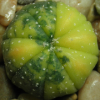Sign in to follow this
Followers
0

Lophophora alberto-vojtechii Flowers, Identification.
By
hostilis, in Cacti & Succulents

By
hostilis, in Cacti & Succulents